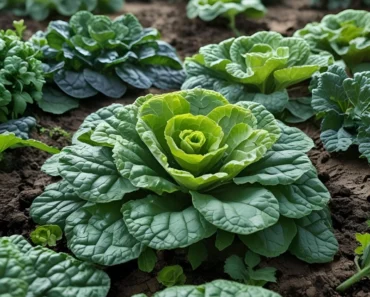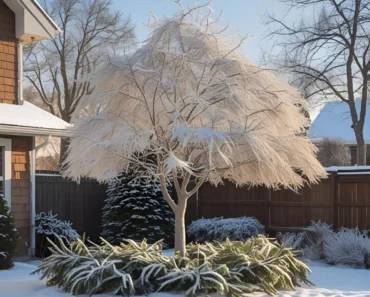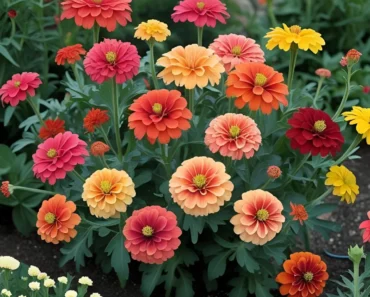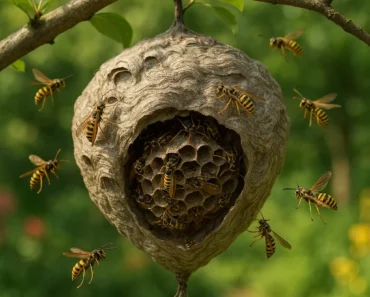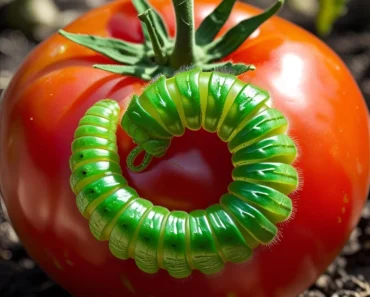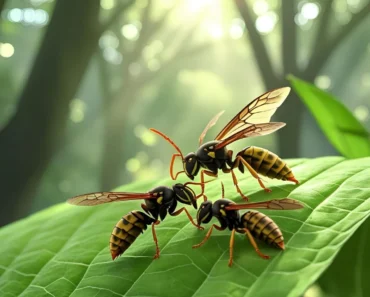As the trees shed their leaves in autumn, many gardeners see fallen foliage as a chore that requires endless raking, bagging, and disposal. However, those layers of colorful leaves are not just seasonal waste—they are one of the most valuable free resources nature provides for gardeners. Properly managed, autumn leaves enrich soil, protect plants, support wildlife, and even reduce gardening costs.
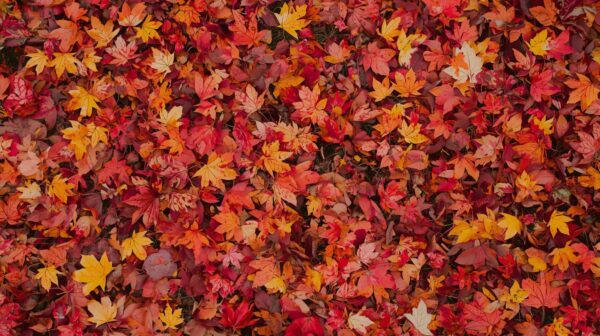
This article explores the many ways to use autumn leaves in the garden, from mulching to composting, soil enrichment, pest deterrence, and wildlife support. It also provides practical step-by-step guides to prepare and apply leaves effectively, ensuring you can take full advantage of this seasonal bounty.
Why Autumn Leaves Are Valuable
Leaves are full of organic matter and trace minerals that trees extract from deep in the soil during the growing season. When they fall, they carry nutrients like calcium, magnesium, potassium, and phosphorus right back to the soil surface. Instead of sending leaves to the landfill, returning them to the garden sets up a natural cycle of soil improvement and fertility building.
Here are key reasons autumn leaves matter:
-
They are rich in carbon, making them excellent “brown” material for compost.
-
When shredded, they create a soft, breathable mulch layer.
-
They improve soil structure, increasing aeration and water retention.
-
Leaves suppress weeds when used as cover.
-
They reduce the need for commercial fertilizers.
-
They support beneficial microorganisms, earthworms, and fungi in the soil.
Mulching with Autumn Leaves
One of the easiest ways to use autumn leaves is as mulch. Mulching involves spreading organic material on the soil surface to protect it from the elements and provide nutrients as it decomposes.
Steps to mulch with leaves:
-
Collect freshly fallen leaves with a rake, leaf blower, or mower bagger.
-
Shred the leaves with a lawn mower or leaf shredder (whole leaves can mat and block airflow).
-
Spread a 2–3 inch layer around trees, shrubs, and garden beds, keeping mulch a few inches away from plant stems.
Benefits of leaf mulch:
-
Protects soil from erosion during fall rains and winter snow.
-
Reduces weed germination in spring.
-
Insulates plant roots from temperature fluctuations.
-
Provides slow-release nutrients as it breaks down naturally.
For perennial flower beds, shredded leaves are especially useful. They insulate perennials over winter and feed the soil as plants come back to life in spring.
Adding Leaves to Compost
Leaves are one of the best raw materials for composting because they are high in carbon, which balances nitrogen-rich “green” materials like kitchen scraps, coffee grounds, or fresh grass clippings.
How to use leaves in compost:
-
Shred or chop leaves to speed up decomposition.
-
Add layers of leaves alternating with greens in your compost pile.
-
Maintain a ratio of about 30:1 (carbon to nitrogen) for effective decomposition. Leaves serve as the bulk carbon source.
-
Keep moisture levels consistent, and turn the pile regularly to aerate.
Composted leaves transform into leaf mold, a dark, crumbly, humus-like material that gardeners prize for its moisture retention and soil-enhancing qualities. Unlike typical compost, leaf mold is low in nutrients but excellent at improving soil texture.
Making Leaf Mold
Leaf mold is decomposed leaves broken down primarily by fungi. It’s simple to make and requires less maintenance than a regular compost pile.
Steps to create leaf mold:
-
Pile leaves in a corner of your garden or in a mesh bin.
-
Moisten the pile lightly.
-
Allow leaves to sit for 6–12 months, turning occasionally.
When finished, you’ll have a rich, earthy material that can be used as a soil conditioner, seed-starting mix ingredient, or moisture-retentive mulch.
Improving Soil with Leaves
Incorporating leaves directly into the soil enriches garden beds and improves soil structure.
Direct incorporation methods:
-
Till shredded leaves into vegetable beds at the end of fall. As they decompose over winter, they add organic matter and improve soil aeration.
-
Mix shredded leaves into raised beds to balance heavy, clay soil by adding fluffiness and porosity.
-
Use leaves to lighten sandy soils, improving water-holding capacity.
This practice not only feeds future crops but also reduces soil compaction and erosion.
Protecting Plants with Leaf Insulation
Leaves make a natural insulating blanket, ideal for overwintering tender plants.
Uses for insulation:
-
Pile shredded leaves around cold-sensitive perennials and roses for winter protection.
-
Cover garlic, strawberry beds, or root crops left in the soil (like carrots and beets) with thick layers of leaves.
-
Use leaves as bedding in cold frames or hoop houses.
By buffering soil temperatures, they help plants survive fluctuating winter climates.
Using Leaves for Weed Suppression
When applied in thick layers, leaves suppress weeds effectively.
-
Apply a layer of 6–8 inches of shredded leaves in areas you want to keep weed-free.
-
Use under trees, shrubs, and pathways.
-
For vegetable gardens, apply heavily in fall and incorporate into soil before spring planting.
This method keeps labor down while also enriching the soil.
Leaves as a Natural Pest Deterrent
Leaves can also be deployed strategically to reduce pests.
-
Oak leaves are acidic and can be used around acid-loving plants like blueberries while discouraging slugs and snails.
-
Walnut leaves contain compounds that deter some weeds and pests when used carefully (avoid near sensitive plants).
-
Mulched leaves discourage soil splash, which spreads fungal diseases.
Creating Wildlife Habitats
Leaves are essential for garden biodiversity. Many insects, reptiles, and mammals overwinter in leaf litter. By leaving some areas covered with leaves, you create a mini habitat that supports pollinators and beneficial insects.
-
Butterflies and moths often use leaves to overwinter in chrysalis form.
-
Beetles, spiders, and pollinators thrive in leafy layers.
-
Birds forage for insects in leaf cover.
A section of the garden dedicated to a “leaf pile” supports the ecological balance that helps gardens thrive year-round.
Using Leaves in Lawn Care
Leaves can be cycled directly into your lawn:
-
Mow over fallen leaves to shred them into tiny pieces.
-
Allow shredded material to settle between grass blades, where it decomposes.
-
This adds organic matter and nutrients without harming turfgrass.
Excess leaves left whole on the lawn, however, can smother and kill grass, so shredding is essential.
Leaves as a Base for Garden Paths
Leaves can also serve as a practical material for pathways and walkways around the garden.
-
When used as an underlayer beneath woodchips or gravel, they suppress weeds and break down over time.
-
A thick bed of shredded leaves makes a natural, soft, and spongy garden walkway.
Best Leaves for the Garden
Not all leaves decompose the same way. Some are more beneficial than others.
Best for composting and mulching:
-
Maple
-
Birch
-
Ash
-
Fruit tree leaves (apple, pear, cherry)
High in tannins, slower to break down, best shredded:
-
Oak
-
Beech
-
Holly
Leaves to use carefully:
-
Black walnut leaves contain juglone, toxic to many plants (use composted and aged leaves to reduce effects).
-
Eucalyptus leaves may suppress plant growth until fully composted.
Common Mistakes to Avoid
While leaves are beneficial, certain mistakes can reduce their effectiveness.
-
Using whole leaves without shredding: Large leaves, like maple or sycamore, can mat down and block water and air.
-
Applying leaves too close to plant stems: Can encourage rot and pests.
-
Ignoring disease signs: Leaves from diseased trees (such as apple scab or oak wilt) should be removed, not recycled into the garden.
-
Overloading compost with leaves: Balance with nitrogen sources to prevent slow decomposition.
Step-by-Step Autumn Leaf Strategy for Gardeners
Here’s a seasonal plan to maximize leaf use:
Step 1: Collect
-
Rake, blow, or mow leaves into piles.
-
Shred leaves for faster handling.
Step 2: Distribute
-
Apply as mulch around perennials.
-
Set aside a pile for composting.
-
Store some whole, dry leaves for later use in summer composting to balance fresh greens.
Step 3: Protect
-
Spread thick layers on beds of garlic, strawberries, and perennials.
-
Insulate around roses or shrubs.
Step 4: Enrich
-
Till shredded leaves into empty vegetable beds.
-
Start a leaf mold pile.
Step 5: Reserve for Wildlife
-
Leave undisturbed piles for beneficial insects.
Ecological and Cost Benefits
Reusing autumn leaves benefits not only your garden but also the environment:
-
Reduces landfill waste and municipal disposal costs.
-
Decreases reliance on synthetic fertilizers.
-
Encourages healthier soil and biodiversity.
-
Saves money on mulch and soil conditioners by substituting natural leaf products.
Conclusion: Turning Waste into Wealth
Autumn leaves are more than seasonal litter—they are one of the most valuable resources available to gardeners. By mulching, composting, conditioning soil, insulating plants, and supporting wildlife, leaves transform into a cycle of fertility and biodiversity that lasts year-round. Whether you’re building leaf mold, enriching vegetable beds, reducing weeds, or simply protecting perennials from winter cold, autumn leaves are essential allies in sustainable gardening.
Instead of raking them to the curb, think of autumn leaves as free organic gold dropped at your doorstep. With mindful use, your garden will reward you with healthier soil, stronger plants, and vibrant life year after year.

